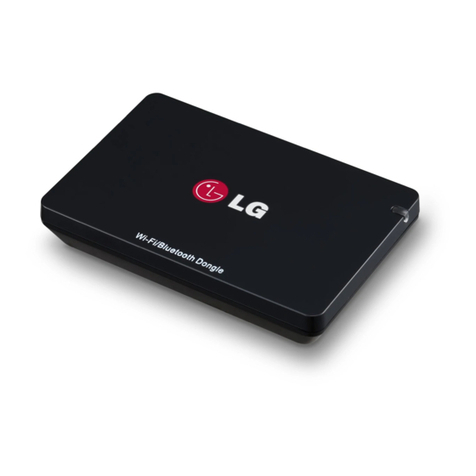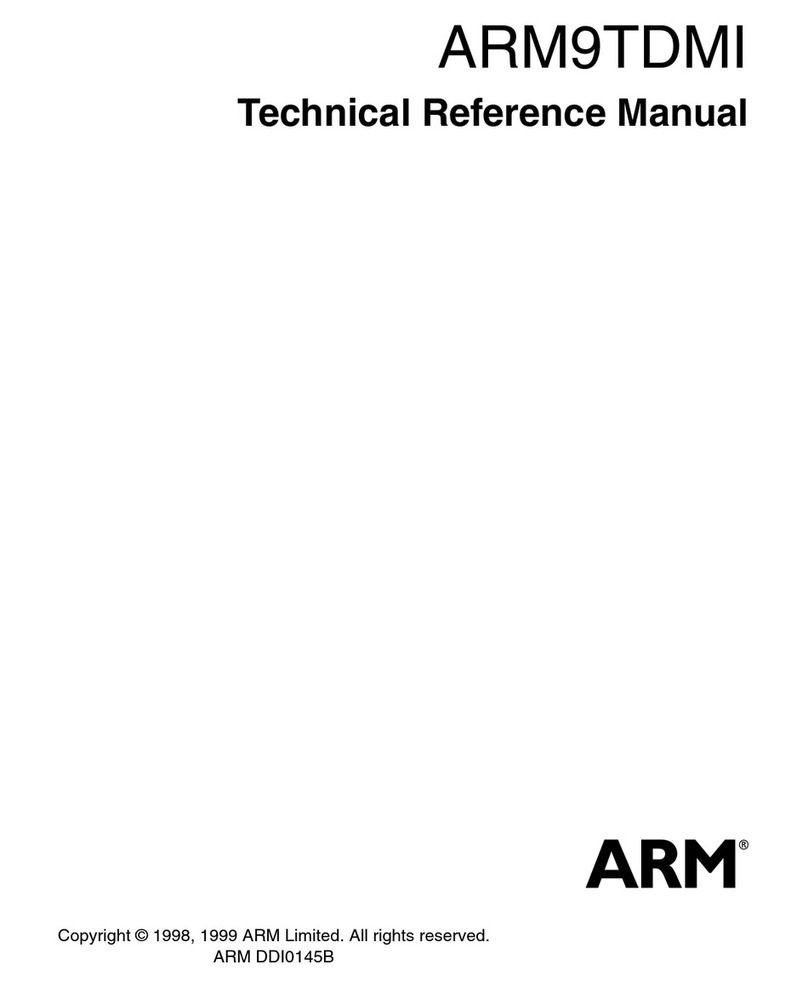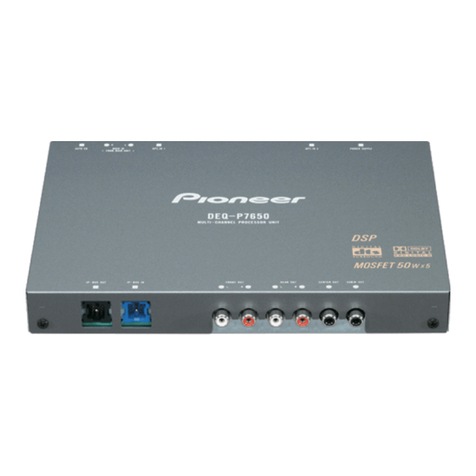SimTech SIMCom SIM5360-PCIE Series Supplement

SIM5360-PCIE_Hardware Design_V1.03

SmartMachineSmartDecision
SIM5360-PCIE_Hardware_Design 2 2015-01-22
Document Title SIM5360-PCIE Hardware Design
Version 1.03
Date 2015-01-22
Status Release
Document
Control ID SIM5360-PCIE_Hardware_Design_V1.03
General Notes
SIMCom offers this information as a service to its customers, to support application and engineering efforts that
use the products designed by SIMCom. The information provided is based upon requirements specifically
provided to SIMCom by the customers. SIMCom has not undertaken any independent search for additional
relevant information, including any information that may be in the customer’s possession. Furthermore, system
validation of this product designed by SIMCom within a larger electronic system remains the responsibility of
the customer or the customer’s system integrator. All specifications supplied herein are subject to change.
Copyright
This document contains proprietary technical information which is the property of SIMCom Limited, copying
of this document and giving it to others and the using or communication of the contents thereof, are forbidden
without express authority. Offenders are liable to the payment of damages. All rights reserved in the event of
grant of a patent or the registration of a utility model or design. All specification supplied herein are subject to
change without notice at any time.
Copyright © Shanghai SIMCom Wireless Solutions Ltd. 2015

SmartMachineSmartDecision
SIM5360-PCIE_Hardware_Design 3 2015-01-22
Contents
Version History........................................................................................................................................................ 6
1. Introduction................................................................................................................................................... 7
2. SIM5360-PCIE Overview............................................................................................................................. 8
2.1. SIM5360-PCIE Key Features................................................................................................................... 9
2.2. Operating Mode.......................................................................................................................................11
2.3. Functional Diagram .................................................................................................................................11
3. Package Information................................................................................................................................... 13
3.1. Pin Out Diagram..................................................................................................................................... 13
3.2. PCI Express Mini Card Connector Pin Description ............................................................................... 14
3.3. Package Dimensions............................................................................................................................... 15
4. Application Interface .................................................................................................................................. 16
4.1. Power Supply.......................................................................................................................................... 16
4.2. Power Saving Mode................................................................................................................................ 16
4.2.1 Minimum Functionality Mode and Sleep Mode ................................................................................. 16
4.2.2 Wake Up SIM5360-PCIE from Sleep Mode ....................................................................................... 17
4.3. USB 2.0 .................................................................................................................................................. 17
4.3.1. USB Port Specification ....................................................................................................................... 17
4.3.2. Firmware Update................................................................................................................................. 17
4.4. SIM Card Interface ................................................................................................................................. 17
4.5. PCM Interface ........................................................................................................................................ 18
4.6. PERST# .................................................................................................................................................. 19
4.7. W_DISABLE# ....................................................................................................................................... 20
4.8. LED_WWAN# ....................................................................................................................................... 20
4.9. WAKE# .................................................................................................................................................. 21
4.10. SMT Antenna Connector........................................................................................................................ 22
5. Electrical, Reliability and Radio Characteristics ..................................................................................... 23
5.1. Absolute Maximum Ratings................................................................................................................... 23
5.2. Recommended Operating Conditions..................................................................................................... 23
5.3. SIM Card Interface Characteristics ........................................................................................................ 23
5.4. USIM_VDD Characteristics................................................................................................................... 24
5.5. Current Consumption (VCC =3.3V+0.3V/-0.1V) .................................................................................. 24
5.6. Electro-Static Discharge ......................................................................................................................... 25
5.7. Radio Characteristics.............................................................................................................................. 26
5.7.1. Conducted Output Power .................................................................................................................... 26
5.7.2. Conducted Receive Sensitivity............................................................................................................ 26
5.7.3. Supported Band................................................................................................................................... 27
6. Appendix...................................................................................................................................................... 28
I. SIM5360-PCIE Top and Bottom View .................................................................................................. 28
II. Dimensions of SIM5360-PCIE............................................................................................................... 29
III. Related Documents................................................................................................................................. 31
IV. Terms and Abbreviations ........................................................................................................................ 32
V. Safety Caution ........................................................................................................................................ 34

SmartMachineSmartDecision
SIM5360-PCIE_Hardware_Design 4 2015-01-22
Table Index
TABLE 1: SIM5360-PCIE SERIES FREQUENCY BANDS ............................................................................................ 8
TABLE 2: SIM5360-PCIE KEY FEATURES.................................................................................................................... 9
TABLE 3: CODING SCHEMES AND MAXIMUM NET DATA RATES OVER AIR INTERFACE .............................. 9
TABLE 4: OPERATING MODE...................................................................................................................................... 11
TABLE 5: PCI EXPRESS MINI CARD CONNECTOR PIN DESCRIPTION............................................................... 14
TABLE 6: RECOMMENDED 3.3V POWER SUPPLY CHARACTERISTICS ............................................................. 16
TABLE 7: THE CURRENT CONSUMPTION OF MINIMUM FUNCTIONALITY MODE (BS-PA-MFRMS=5)...... 16
TABLE 8: USB PORT SPECIFICATION........................................................................................................................ 17
TABLE 9: PCM SPECIFICATION .................................................................................................................................. 18
TABLE 10: PCM DC CHARACTERISTICS .................................................................................................................. 19
TABLE 11: PERST# ELECTRICAL CHARACTERISTIC............................................................................................. 19
TABLE 12: FLIGHT MODE CONTROL FUNCTION ................................................................................................... 20
TABLE 13: W_DISABLE# ELECTRICAL CHARACTERISTIC ..................................................................................20
TABLE 14: NETWORK STATUS INDICATION PIN STATUS..................................................................................... 20
TABLE 15: RECOMMENDED PASSIVE ANTENNA CHARACTERISTICS.............................................................. 22
TABLE 16: RECOMMENDED ACTIVE ANTENNA CHARACTERISTICS ............................................................... 22
TABLE 17: ABSOLUTE MAXIMUM RATINGS........................................................................................................... 23
TABLE 18: OPERATING CONDITIONS ....................................................................................................................... 23
TABLE 19: SIM CARD INTERFACE CHARACTERISTICS........................................................................................ 23
TABLE 20: USIM_VDD CHARACTERISTICS............................................................................................................. 24
TABLE 21: CURRENT CONSUMPTION ...................................................................................................................... 24
TABLE 22: ESD CHARACTERISTICS (TEMPERATURE: 25℃, HUMIDITY: 45 %).......................................... 26
TABLE 23: CONDUCTED OUTPUT POWER............................................................................................................... 26
TABLE 24: CONDUCTED RECEIVE SENSITIVITY ................................................................................................... 26
TABLE 25: SUPPORTED BAND.................................................................................................................................... 27
TABLE 26: RELATED DOCUMENTS ........................................................................................................................... 31
TABLE 27: TERMS AND ABBREVIATIONS................................................................................................................ 32
TABLE 28: SAFETY CAUTION..................................................................................................................................... 34

SmartMachineSmartDecision
SIM5360-PCIE_Hardware_Design 5 2015-01-22
Figure Index
FIGURE 1: SIM5360-PCIE FUNCTIONAL DIAGRAM................................................................................................ 12
FIGURE 2: SIM5360-PCIE PIN OUT DIAGRAM ......................................................................................................... 13
FIGURE 3: DIMENSIONS OF SIM5360-PCIE(UNIT: MM))..................................................................................... 15
FIGURE 4: SIM CARD HOLDER REFERENCE CIRCUIT.......................................................................................... 18
FIGURE 5: RESET TIMING ........................................................................................................................................... 19
FIGURE 6: LED_WWAN# REFERENCE CIRCUIT...................................................................................................... 20
FIGURE 7: WAKE# BEHAVIOUR ................................................................................................................................. 21
FIGURE 8: WAKE# BEHAVIOR AS A CALLER........................................................................................................... 21
FIGURE 9: WAKE# REFERENCE CIRCUIT................................................................................................................. 21
FIGURE 10: SIM5360-PCIE TOP AND BOTTOM VIEW............................................................................................. 28
FIGURE 11: DIMENSIONS OF SIM5360-PCIE (UNIT: MM TOP VIEW)................................................................... 29
FIGURE 12: DIMENSIONS OF SIM5360-PCIE (UNIT: MM BOTTOM AND SIDE VIEW) ...................................... 30

SmartMachineSmartDecision
SIM5360-PCIE_Hardware_Design 6 2015-01-22
Version History
Date Version Description of change Author
2014-04-01 1.01 Origin Libing
2014-07-10 1.02 Modify pin names of SIM5360-PCIE
Modify figure1 and figure4. Libing
2015-01-22 1.03 Modify weight of SIM5360-PCIE
Modify table 18. Libing

SmartMachineSmartDecision
SIM5360-PCIE_Hardware_Design 7 2015-01-22
1. Introduction
SIM5360-PCIE module is PCI Express Mini Card. This document describes SIM5360-PCIE hardware interface in
great detail, which can help user to quickly understand SIM5360-PCIE interface specifications, electrical and
mechanical details.

SmartMachineSmartDecision
SIM5360-PCIE_Hardware_Design 8 2015-01-22
2. SIM5360-PCIE Overview
SIM5360-PCIE series support quad-band GSM/GPRS/EDGE and dual-band UMTS/HSDPA/HSUPA/HSPA+,
which work on frequencies GSM850,EGSM900,DCS1800,PCS1900,WCDMA2100/900 or WCDMA1900/
WCDMA850 or WCDMA2100/ WCDMA850
The modules can be chosen based on the wireless network configuration. In this document, the entire radio band
configuration of SIM5360-PCIE series is described in the following table.
Table 1: SIM5360-PCIE Series Frequency Bands
Standard Frequency SIM5360E-PCIE SIM5360A-PCIE SIM5360J-PCIE
GSM 850MHz
EGSM 900MHz
DCS1800MHz
GSM
PCS1900MHz
WCDMA 850MHz
WCDMA 900MHz
WCDMA 1900MHz
WCDMA
WCDMA 2100MHz
HSDPA
HSPA
HSUPA
DRX Receiver Diversity
SIM5360-PCIE provides various hardware interfaces via Mini PCI Express card connector.
Power supply: : 3.3V+0.3/-0.1V
USB Interface
SIM Interface
PCM Interface
W_DISABLE#
WAKE#
PERST#
LED_WWAN#

SmartMachineSmartDecision
SIM5360-PCIE_Hardware_Design 9 2015-01-22
2.1. SIM5360-PCIE Key Features
Table 2: SIM5360-PCIE Key Features
Feature Implementation
Power supply Single supply voltage 3.3V+0.3V/-0.1V
Transmission data
● Dual-mode UMTS/HSPA+/EDGE/GPRS operation
● GPRS Class B, multislot class 12 operation, Supports coding scheme:
CS1-4
● EDGE multislot class 12 operation, Supports coding schemes
MSC1-9
● UMTS R99 data rates-384 kbps DL/UL
● Category 6 HSDPA -14.4 Mbps HSUPA-5.76 Mbps
● CSD feature: 9.6, 14.4, 64 kbps UL/DL
SMS
● MT, MO, CB, Text and PDU mode
● SMS storage: SIM card or ME(default)
● Support transmission of SMS alternatively over CSD or GPRS.
User can choose preferred mode.
SIM interface Support identity card: 1.8V, 3V.
USB Support USB2.0 Slave mode
Rx-diversity Support UMTS Rx-diversity.
Phonebook management Support phonebook types: SM, FD, LD, RC, ON, MC.
SIM application toolkit Support SAT class 3, GSM 11.14 Release 98
Support USAT
Physical characteristics Size: 50.95*32*4.95mm
Weight:10.2 g
Firmware upgrade Firmware upgrade over USB interface
PCM
Multiplex on GPIOs.
Used for analog audio function with external codec.
Support long frame sync and short frame sync.
Support 8-bit A-law, μ-law and 16-bit linear data formats.
Support master and slave mode, but must be the master in long frame
sync.
Temperature range
● Normal operation temperature: -30°C to +80°C
● Extended operation temperature: -40°C to +85°C
● Storage temperature -45°C to +90°C
Table 3: Coding schemes and maximum net data rates over air interface
Multislot definition(GRPS/EDGE)
Slot class DL slot number UL slot number Active slot number
1 1 1 2
2 2 1 3
3 2 2 3
4 3 1 4
5 2 2 4

SmartMachineSmartDecision
SIM5360-PCIE_Hardware_Design 10 2015-01-22
6 3 2 4
7 3 3 4
8 4 1 5
9 3 2 5
10 4 2 5
11 4 3 5
12 4 4 5
GPRS coding scheme Max data rata(4 slots)Modulation type
CS 1 = 9.05 kb/s / time slot 36.2 kb/s GMSK
CS 2 = 13.4 kb/s / time slot 53.6 kb/s GMSK
CS 3 = 15.6 kb/s / time slot 62.4 kb/s GMSK
CS 4 = 21.4 kb/s / time slot 85.6 kb/s GMSK
EDGE coding scheme Max data rata(4 slots)Modulation type
MCS 1 = 8.8 kb/s/ time slot 35.2 kb/s GMSK
MCS 2 = 11.2 kb/s/ time slot 44.8 kb/s GMSK
MCS 3 = 14.8 kb/s/ time slot 59.2 kb/s GMSK
MCS 4 = 17.6 kb/s/ time slot 70.4 kb/s GMSK
MCS 5 = 22.4 kb/s/ time slot 89.6 kb/s 8PSK
MCS 6 = 29.6 kb/s/ time slot 118.4 kb/s 8PSK
MCS 7 = 44.8 kb/s/ time slot 179.2 kb/s 8PSK
MCS 8 = 54.4 kb/s/ time slot 217.6 kb/s 8PSK
MCS 9 = 59.2 kb/s/ time slot 236.8 kb/s 8PSK
HSDPA device category Max data rate(peak)Modulation type
Category 1 1.2Mbps 16QAM,QPSK
Category 2 1.2Mbp 16QAM,QPSK
Category 3 1.8Mbps 16QAM,QPSK
Category 4 1.8Mbps 16QAM,QPSK
Category 5 3.6Mbps 16QAM,QPSK
Category 6 3.6Mbps 16QAM,QPSK
Category 7 7.2Mbps 16QAM,QPSK
Category 8 7.2Mbps 16QAM,QPSK
Category 9 10.2Mbps 16QAM,QPSK
Category 10 14.4Mbps 16QAM,QPSK
HSUPA device category Max data rate(peak)Modulation type
Category 1 0.96Mbps QPSK
Category 2 1.92Mbps QPSK
Category 3 1.92Mbps QPSK
Category 4 3.84Mbps QPSK
Category 5 3.84Mbps QPSK
Category 6 5.76Mbps QPSK

SmartMachineSmartDecision
SIM5360-PCIE_Hardware_Design 11 2015-01-22
2.2. Operating Mode
The table below summarizes the various operating modes of SIM5360-PCIE.
Table 4: Operating Mode
Mode Function
GSM/GPRS/EDG
E/WCDMA/HSP
A+ SLEEP
Module will automatically go into sleep mode if the conditions of sleep
mode are enabling and there is no on air and no hardware interrupt (such as
GPIO interrupt or data on serial port).
In this case, the current consumption of module will reduce to the minimal
level.
In sleep mode, the module can still receive paging message and SMS.
GSM/WCDMA
IDLE
Software is active. Module registered to the GSM/WCDMA network, and
the module is ready to communicate.
GSM/WCDMA
TALK
Connection between two subscribers is in progress. In this case, the power
consumption depends on network settings such as DTX off/on,
FR/EFR/HR, hopping sequences, antenna.
GPRS/EDGE/HS
PA+ STANDBY
Module is ready for GPRS/EDGE/HSPA+ data transfer, but no data is
currently sent or received. In this case, power consumption depends on
network settings and GPRS/EDGE/HSPA+ configuration.
Normal
operation
GPRS/EDGE/HS
PA+ DATA
TRANSFER
There is GPRS/EDGE/HSPA+ data transfer in progress. In this case, power
consumption is related with network settings (e.g. power control level);
uplink/downlink data rates and GPRS configuration (e.g. used multi-slot
settings).
Minimum
functionalit
y mode
AT command “AT+CFUN” can be used to set the module to a minimum functionality mode
without removing the power supply. In this mode, the RF part of the module will not work or the
SIM card will not be accessible, or both RF part and SIM card will be closed, and the serial port
is still accessible. The power consumption in this mode is lower than normal mode.
2.3. Functional Diagram
The following figure is SIM5360-PCIE functional diagram.

SmartMachineSmartDecision
SIM5360-PCIE_Hardware_Design 12 2015-01-22
Figure 1: SIM5360-PCIE Functional Diagram

SmartMachineSmartDecision
SIM5360-PCIE_Hardware_Design 13 2015-01-22
3. Package Information
3.1. Pin Out Diagram
Figure 2: SIM5360-PCIE Pin Out Diagram

SmartMachineSmartDecision
SIM5360-PCIE_Hardware_Design 14 2015-01-22
3.2. PCI Express Mini Card Connector Pin Description
Table 5: PCI Express Mini Card Connector Pin Description
Pin name Pin number I/O Description Comment
Power supply
VCC 2,39,41,52 I 3.3 Power supply for module
GND
4,9,15,18,21,
26,27,29,34,3
5,37,40,43,50
Ground
Reset
PERST# 22 I Reset input (Active low)
USB 2.0
USB_DP 38
USB_DN 36
I/O USB 2.0 high speed port for data transfer, voice
call, debug and FW download, etc.
SIM card interface
USIM_VDD 8 O 1.8/3.0V Configurable LDO output, default
1.8V output, maximum output current is 30mA
USIM_DATA 10 I/O SIM data input/output
USIM_CLK 12 O SIM clock
USIM_RST 14 O SIM reset
PCM interface
PCM_CLK 45 O PCM clock
PCM_OUT 47 O PCM data output
PCM_IN 49 I PCM data input
PCM_SYNC 51 O PCM synchrony
If these pins are
unused, keep open
others
WAKE# 1 O Wake up host
W_DISABLE# 20 I RF Control Input
LED_WWAN# 42 O Network Status Indication output
NC
3,5,6,7,11,13,
16,17,19,23,2
4,25,28,30,31
,32,33,44,46,
48
-- No connection Keep open
*: If Analog audio is needed
,
please consult our sales staff, for more information .

SmartMachineSmartDecision
SIM5360-PCIE_Hardware_Design 15 2015-01-22
3.3. Package Dimensions
Figure 3: Dimensions of SIM5360-PCIE(Unit: mm))
Please refer to appendix for package dimension details.

SmartMachineSmartDecision
SIM5360-PCIE_Hardware_Design 16 2015-01-22
4. Application Interface
4.1. Power Supply
The recommended power supply voltage of SIM5360-PCIE is 3.3V.
Table 6: Recommended 3.3V Power Supply Characteristics
Symbol Parameter Min Type Max Unit
VOPower supply voltage 3.2 3.3 3.6 V
IOSupply current capability 2000 - - mA
4.2. Power Saving Mode
SIM5360-PCIE has two power saving modes: minimum functionality mode and sleep mode. When
SIM5360-PCIE is in sleep mode and minimum functionality mode, the current of module is lowest.
4.2.1 Minimum Functionality Mode and Sleep Mode
The AT command “AT+CFUN=<fun>” can be used to set SIM5360-PCIE into minimum functionality.
There are three functionality modes, which could be set by the AT command “AT+CFUN=<fun>”. The command
provides the choice of the functionality levels <fun>=0, 1, 4.
AT+CFUN=0: Minimum functionality.
AT+CFUN=1: Full functionality (default).
AT+CFUN=4: Flight mode (disable RF function).
Table 7: The Current Consumption of Minimum Functionality Mode (BS-PA-MFRMS=5)
<fun> Current consumption(mA) (sleep mode)
0 1.4
1 2.7
4 1.4
Minimum functionality mode minimizes the current consumption to the lowest level. If SIM5360-PCIE is set to
minimum functionality by “AT+CFUN=0”, the RF function and SIM card function will be disabled. In this case,
the serial port and USB port are still accessible, but all AT commands correlative with RF function and SIM card
function will not be accessible.
Note: For detailed information about the AT Command “AT+CFUN=<fun>”, please refer to document
[1].
If USB HOST sends USB suspend request, SIM5360-PCIE will enter sleep mode automatically for reducing
power consume, when peripheral equipment of SIM5360-PCIE stops working, and module has no on air or
audio activity required. In sleep mode, SIM5360-PCIE can still receive paging or SMS from network.
Note: SIM5360-PCIE could enter sleep mode when the host CPU supports USB suspend mode, otherwise it
could not enter sleep mode.

SmartMachineSmartDecision
SIM5360-PCIE_Hardware_Design 17 2015-01-22
4.2.2 Wake Up SIM5360-PCIE from Sleep Mode
When SIM5360-PCIE is in sleep mode, the following methods can wake up the module:
USB HOST sends USB resume request.
Receive a voice or data call from network.
Receive a SMS from network.
4.3. USB 2.0
SIM5360-PCIE is compliant with USB 2.0 specification. It supports full-speed and high- speed when acting as a
peripheral device.
4.3.1. USB Port Specification
SIM5360-PCIE could achieve data transfer, voice call, debug and software download, etc, through USB interface.
When module is powered on, and connected USB_DP, USB_DN and GND to PC, and driver installed
successfully, then 5 COM port, “SIMTECH HS-USB Modem 9000”, “SIMTECH HS-USB NMEA9000”,
“SIMTECH HS-USB AT port 9000”, “SIMTECH HS-USB Diagnostics 9000” and “SIMTECH Wireless
HS-USB Ethernet Adapter 9000” could be recognized by the USB HOST.
Table 8: USB port Specification
4.3.2. Firmware Update
If users need to upgrade through USB port, it is necessary to power on SIM5360-PCIE first, then connect
USB_DP, USB_DN, GND to USB HOST.
4.4. SIM Card Interface
The SIM interface complies with the GSM Phase 1 specification and the new GSM Phase 2+ specification for
FAST 64 kbps SIM card. Both 1.8V and 3.0V SIM card are supported. The SIM interface is powered from an
internal regulator in the module.
It is recommended to use an ESD protection component such as ST (www.st.com ) ESDA6V1W5. Note that the
SIM peripheral circuit should be close to the SIM card socket. The reference circuit of the 6-pin SIM card holder
is illustrated in the following figure.
Port Name Description
SIMTECH HS-USB AT port 9000 Module could be controlled by sending AT command via USB
Application Port.
SIMTECH HS-USB Diagnostics 9000 Module could be debugged by grabbing log through USB Debug
Port.
SIMTECH HS-USB NMEA 9000 GPS data could be achieved through SIMTECH NMEA Device
port. SIM5360-PCIE has not this function.
SIMTECH HS-USB Modem 9000 Module could transfer data through Modem.

SmartMachineSmartDecision
SIM5360-PCIE_Hardware_Design 18 2015-01-22
Figure 4: SIM Card Holder Reference Circuit
SIM card circuit is susceptible to be interfered, causing the SIM card failure or some other issues, so it is
strongly recommended to follow these guidelines while designing:
Make sure that SIM card holder should stay away from GSM antenna while in PCB layout;
SIM traces should keep away from RF lines、VBAT and high-speed signal lines, and the shorter the
better;
Keep good connectivity between SIM holder GND and module GND;
It is recommended to do some protection on USIM_CLK to keep away from interference;
Recommended to place a 1uF capacitor on USIM_VDD line and keep close to the holder;
Place some TVS, the parasitic capacitance should not exceed 50pF, and cascade 51Ohm resistor to
enhance ESD protection.
4.5. PCM Interface
SIM5360-PCIE provides hardware PCM interface for external codec. The PCM interface enables
communication with an external codec to support hands-free applications. SIM5360-PCIE PCM interface can
be used in two modes: the default mode is auxiliary PCM (8 KHz short sync mode at 2048 KHz PCM CLK);
the other mode is primary PCM (8 KHz long sync mode at 128 KHz PCM CLK). In short-sync (primary PCM)
mode, SIM5360-PCIE can be a master or a slave. In long-sync (auxiliary PCM) mode, SIM5360-PCIE is
always a master. SIM5360-PCIE also supports 3 kinds of coding formats: 8 bits (u-law or A-law) and 16 bits
(linear).
Table 9: PCM Specification
Characteristics Specification
Line Interface Format Linear or 8 bits (u-law or A-law)
Data length 16bits or 8 bits
PCM Clock/Sync Source Master or a slave Mode(2048 KHz ) / Master Mode(128 KHz )
PCM Clock Rate 2048 KHz / 128Khz
PCM Sync Format Short sync/Long sync both support

SmartMachineSmartDecision
SIM5360-PCIE_Hardware_Design 19 2015-01-22
Note: PCM interface can be control by AT command. For more details please refer to document [1] and
document [2]
Table 10: PCM DC Characteristics
Symbol Parameter Min Type Max Unit
VIH High-level input voltage 1.26 1.8 2.1 V
VIL Low-level input voltage -0.3 0 0.63 V
VOH High-level output voltage 1.35 1.8 1.8 V
VOL Low-level output voltage 0 0 0.45 V
4.6. PERST#
The PERST# pin could be used as an emergency reset. SIM5360-PCIE has power-up reset function, so
power-up reset pulse is not necessary. When the PERST# pin is pulled to ground, the module will be reset. The
PERST# pin is already pulled up in module, so the external pull-up resistor is not necessary.
The following table is the electrical characteristics of The PERST# pin.
Table 11: PERST# Electrical Characteristic
Symbol Parameter Min Type Max Unit
V IH High-level input voltage 1.7 1.8 3.6 V
V IL Low-level input voltage - - 0.3 V
T high-hold After power up AND-NOT
operation time(keep high
level or keep open)
250 - - ms
T low-hold Reset low level hold on time 300 - - us
The low level pulse time must is longer than 300us,The following figure is the timing of reset function.
Figure 5: Reset Timing
Data Ordering MSB

SmartMachineSmartDecision
SIM5360-PCIE_Hardware_Design 20 2015-01-22
4.7. W_DISABLE#
The W_DISABLE# pin controls SIM5360-PCIE to enter or exit the Flight mode by default. In Flight mode, RF
function is closed to prevent interference with other equipments or minimize current consumption.
Table 12: Flight mode control Function
W_DISABLE# status Module operation
Low Level Flight Mode: RF is closed.
High Level Normal Mode: RF is working.
Table 13: W_DISABLE# Electrical Characteristic
Symbol Parameter Min Type Max Unit
V IH High-level input voltage 3.0 3.3 3.6 V
V IL Low-level input voltage - - 0.3 V
T low-hold low level hold on time 300 - - us
4.8. LED_WWAN#
The LED_WWAN# pin can be used to drive a network status indication LED by default. Its status is listed by
following table.
Table 14: Network Status Indication Pin Status
LED_WWAN# Status Working Status
On Searching Network/Call Connect
200ms On, 200ms Off Data Transmit
800ms On, 800ms Off Registered network
Off Power off / Sleep
Reference circuit is recommended in the following figure:
Figure 6: LED_WWAN# Reference Circuit
This manual suits for next models
3
Table of contents
Popular Computer Hardware manuals by other brands

BOSSCO
BOSSCO AD-3 owner's manual
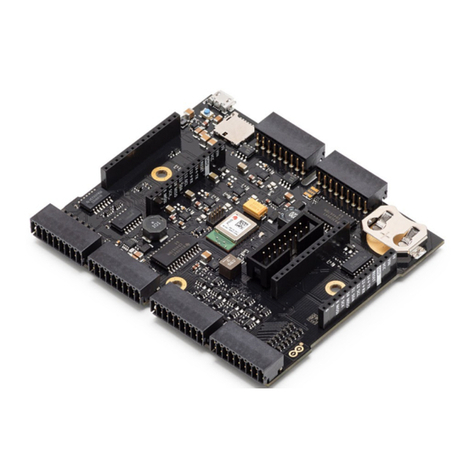
Arduino
Arduino AKX00034 Product reference manual

Dolby Laboratories
Dolby Laboratories CP45 Installation and alignment manual
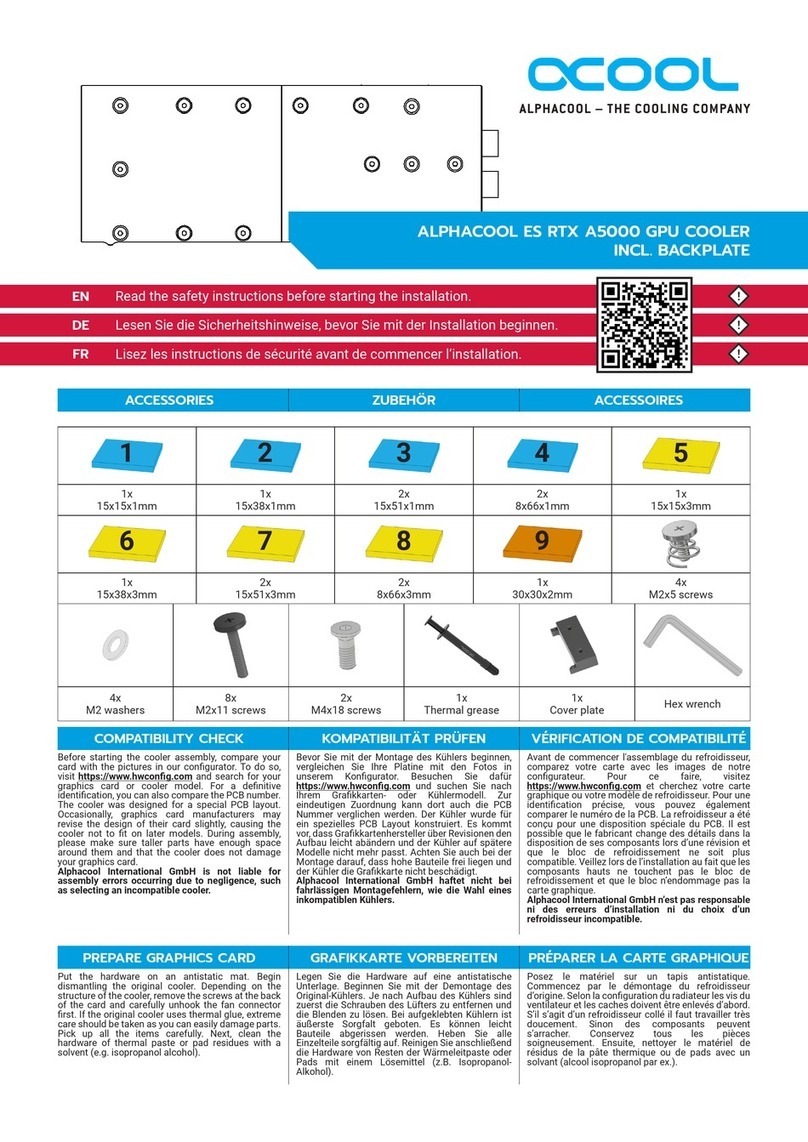
Alphacool
Alphacool ES RTX A5000 quick start guide
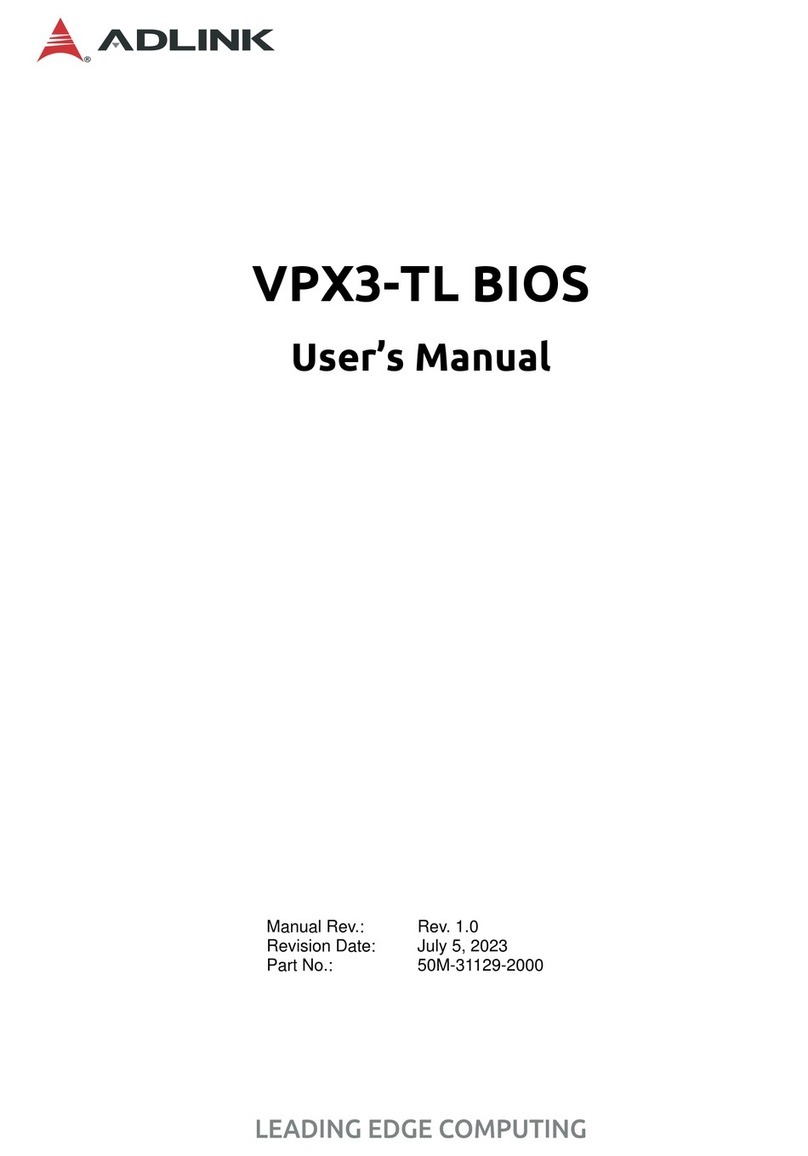
ADLINK Technology
ADLINK Technology VPX3-TL Series user manual
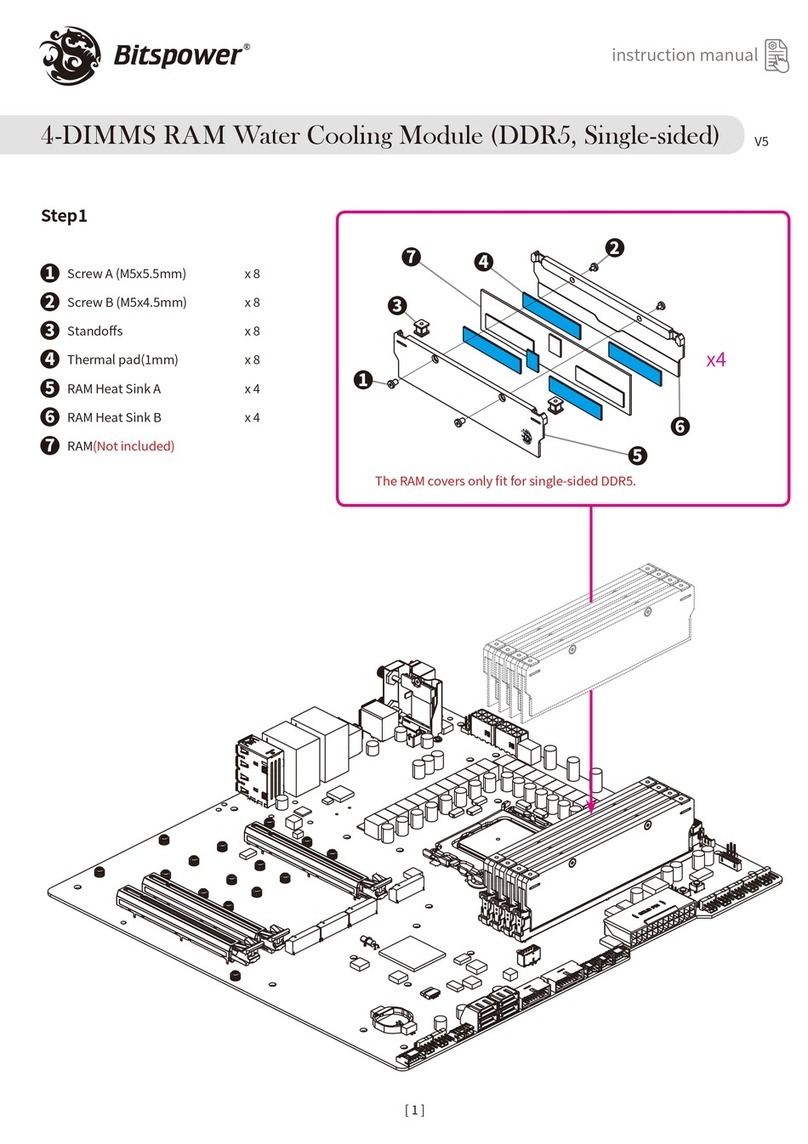
Bitspower
Bitspower BP-RAMS44-D5 instruction manual
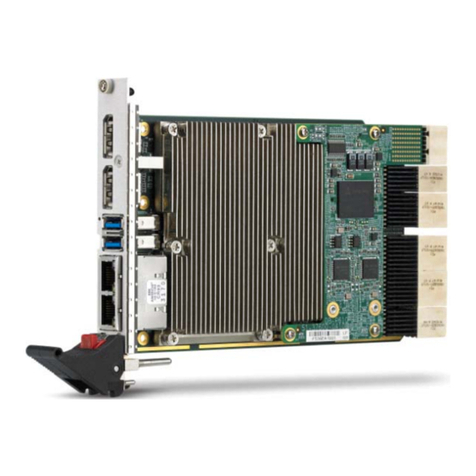
ADLINK Technology
ADLINK Technology cPCI-A3515 Series user manual
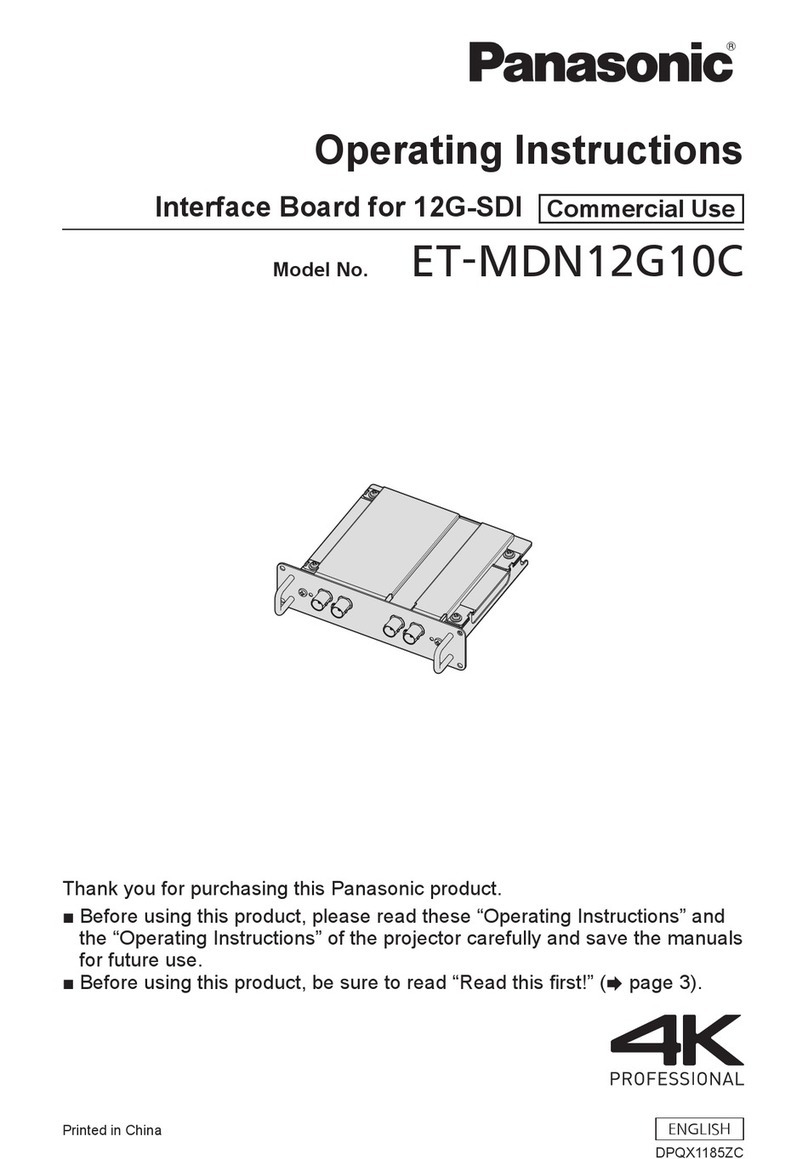
Panasonic
Panasonic ET-MDN12G10C operating instructions
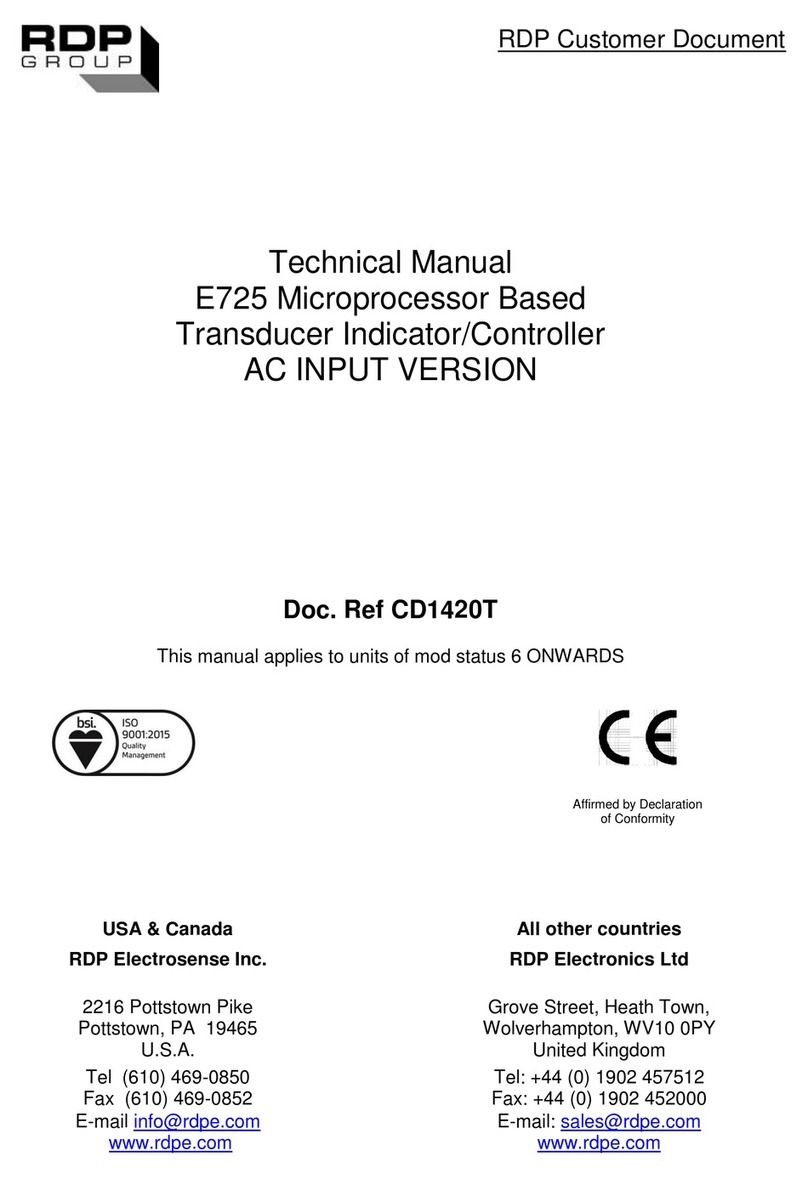
RDP
RDP E725 Technical manual
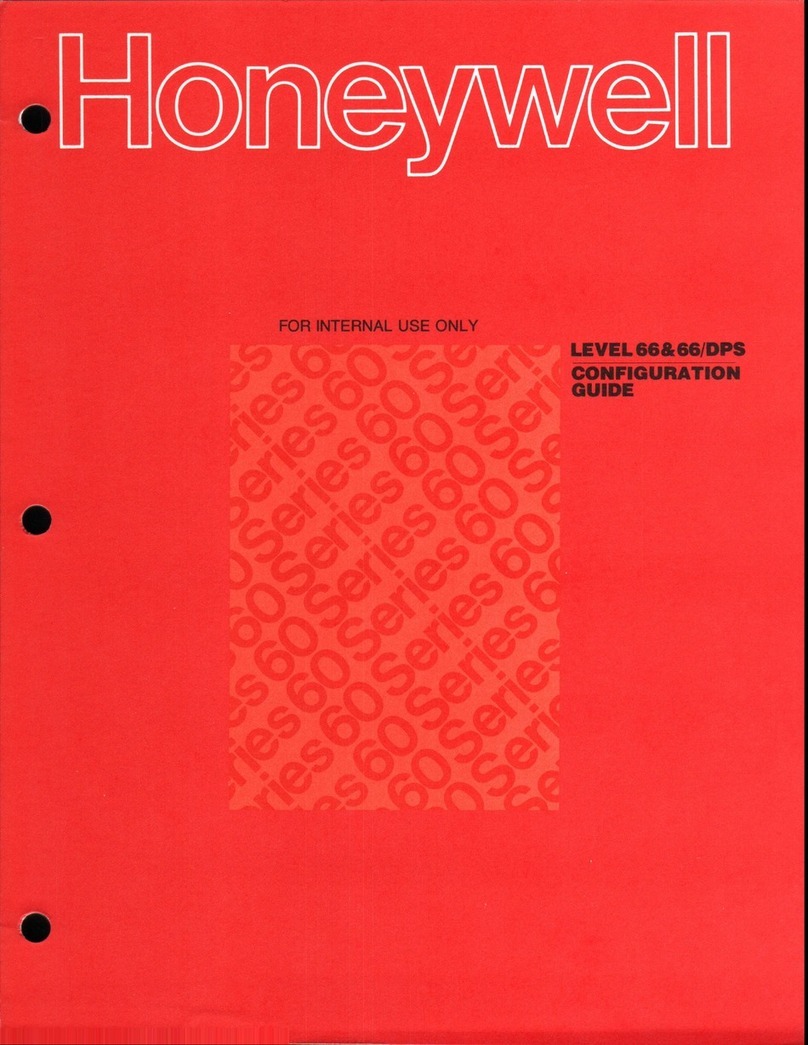
Honeywell
Honeywell 66 Configuration guides
Cypress Semiconductor
Cypress Semiconductor CY7C1310BV18 Specification sheet
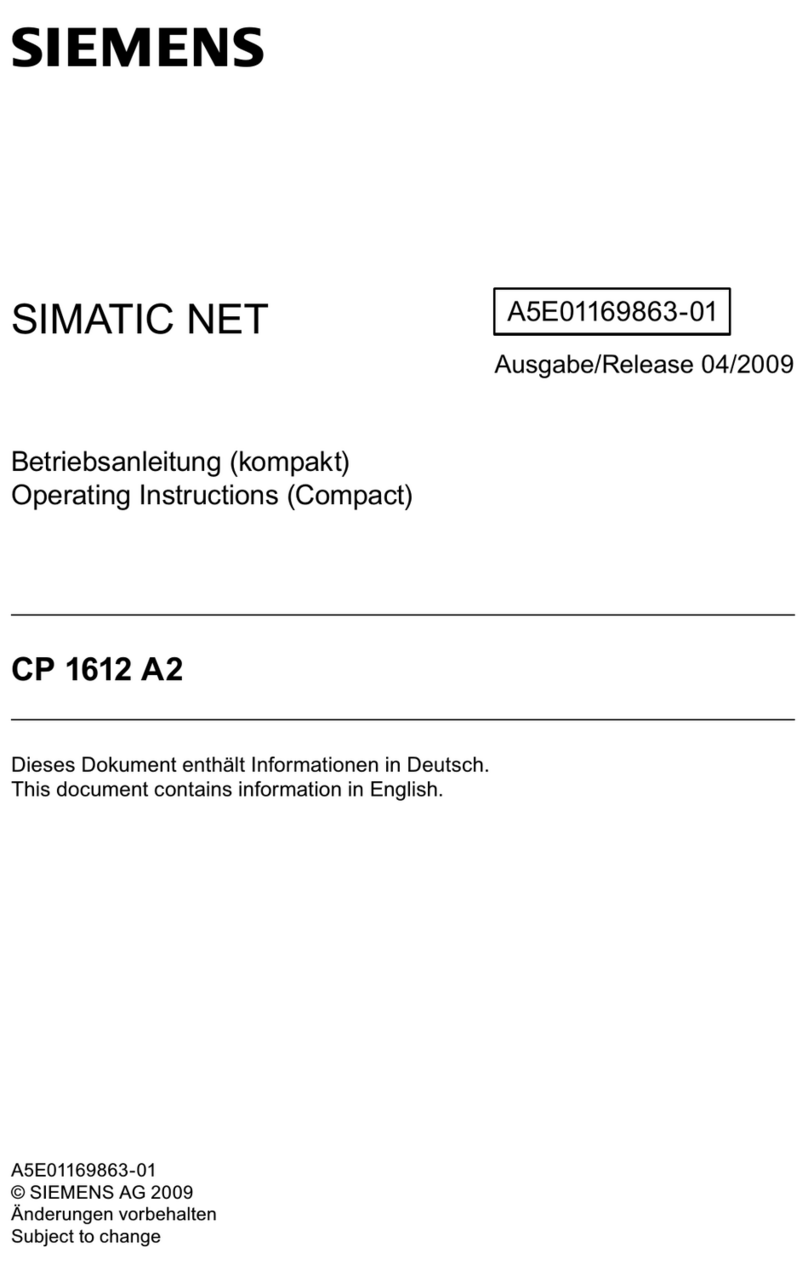
Siemens
Siemens CP 1612 A2 operating instructions
